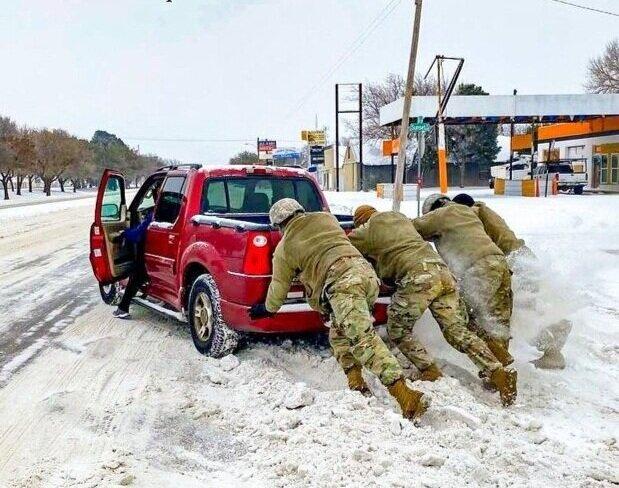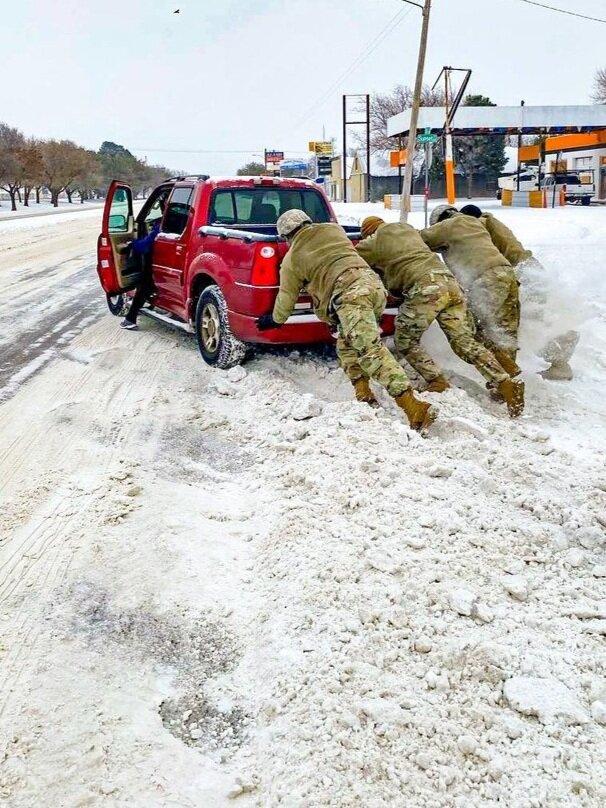In the midst of a hectic ice storm, Texas has been experiencing rolling power outages and blackouts, affecting people in similar ways as last year’s California wildfires. Both situations have left people without electricity or gas, proving major energy companies are unprepared for extraneous circumstances. Climate change as well as natural disasters force states to reconsider their priorities. These states have experienced similar things because of extreme temperatures, both with a lack of power and water.
COURTESY // STAFF SGT. YVONNE ONTIVEROS
The security of our disaster relief proves to be outdated for the climate conditions. The same way the climate has changed over time, the plan to attack the anticipated changes has failed to proceed.
CNBC reported in 2019 that PG&E had shut off power affecting about half a million people in California and many remember this experience. Talking to one of my peers, (who wishes to remain anonymous) about their experience, they shared “I was very frustrated having to go to different stores that were open to charge my phone. It was very awkward and uncomfortable to bargain charging time and outlets with strangers.” There is a certain level of frustration associated with these circumstances and everyone has to navigate through the tough waters.
In both of these outages, providers were ill-equipped for the worst-case scenario. Forbes writer Brentan Alexander reminds many that outages experienced during California’s extreme heatwave seem far less frigid than conditions faced by Texas residents. Failing power grids have shown the environmental as well as financial costs that climate change truly demands. At one point, it is said that four million residents were experiencing an outage at one given time.
Ultimately this means millions of people waiting for answers, and clinging to hope that these providers will be able to restore power. According to the New York Times, all of Texas’ 254 counties were affected by the storm simultaneously. The intensity of the storm, combined with the number of people affected has created a wake-up call for providers in regards to future planning. Similarly to California, with the dense concentration of population in both areas, systems will be forced to adapt to increased usage.
Changing the course of disaster planning may be an initial step for different groups going forward after lessons learned this week. Susie Neilson from The San Francisco Chronicle points out that Texas’ individual state power reliability based on their own grids leaves them in a vulnerable place regarding harsh climate conditions. They do not have the same reliability as other states like California do, which rely on the Western Interconnection, one major electrical grid which powers the majority of the U.S. Many are criticizing the state’s sole reliability on their own electrical system when the climate has proven to be so unpredictable. The Texas Tribune tells the devastating stories of family members, including a resident of Abilene, who tragically passed away in their home after being without power for three days. This is absolutely heartbreaking and no one should have to see their loved one suffer and discover no resources to aid the situation.
The consistent natural disasters have proven to require ample alternatives and backups that sometimes still fail. There are clear parallels to draw between the blackouts experienced in both states, these companies cannot serve a modern problem with outdated technology. They will need aid from those bigger than themselves in order to make the proper changes.
A possible plan to change energy capacities and future plans will require mass participation in reform efforts and aid for these companies to create change in unprecedented times. Despite the lack of public announcements regarding ideas to reconfigure the state’s energy sources, many are now seeing these natural disasters as examples and calls to action that for some may legitimize climate change. However, this cannot be the end of the conversation surrounding a lack of resources distributed to natural disaster relief especially being burdened by the energy companies and those they are unable to provide for in these critical conditions.





![[Both photos courtesy of sonoma.edu]
Ming-Ting Mike Lee stepped in as the new SSU president following Sakakis resignation in July 2022](https://sonomastatestar.com/wp-content/uploads/2024/04/CC4520AB-22A7-41B2-9F6F-2A2D5F76A28C-1200x1200.jpeg)



























